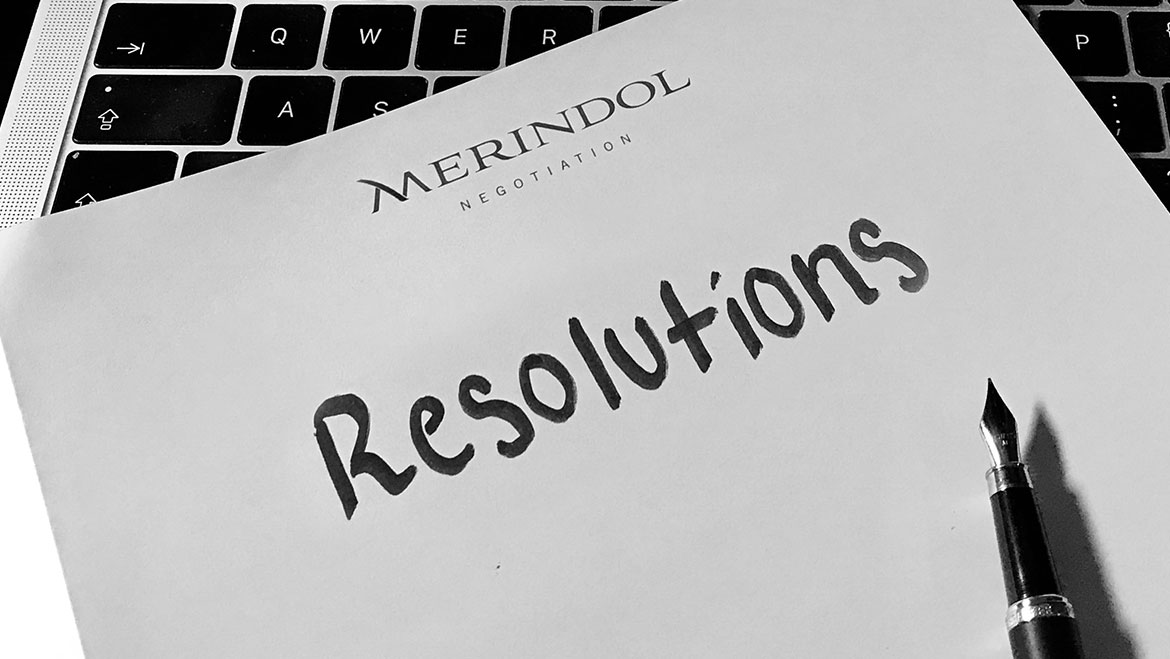Have you broken these golden rules of negotiation? Merindol’s 8 negotiation resolutions
For those of us who negotiate on a regular basis, it is easy to fall into bad habits and get stuck in a more reactive, power eroding approach to negotiation.
Here are eight negotiation resolutions to give you control and keep you on track:
1. Carve out enough time to plan
Negotiation is all about planning. For every hour you are at the negotiation table you should set aside at least four times that amount to think through all scenarios. Plan alone or more preferably with your colleagues. Always plan for the worst outcome so that you can avoid it. If we look at Brexit as an example, why was the issue of Northern Ireland, or a ‘No Deal’ outcome not identified from the outset? If you merely improvise at the last-minute you leave a lot to chance and risk failure.
2. Determine your walkaway position
If you set and stick to your walkaway position (your worst acceptable outcome) you will have a much clearer foundation from which to negotiate. The trick is to try and determine their walkaway, a moving target that is often difficult to harness. Once you have approximated theirs, use it as guide to determine your objective. Always identify and align your walkaway position with members of your team before negotiating. And make sure to not waiver from it. Breaking your breakpoint is like navigating stormy seas without a compass.
3. Don’t attribute too much power to the other side
Human nature often dictates that we often underestimate the power we have. Try and excavate the myriad hidden sources of power you have accrued (time, brand, market share, skill, team, reactivity, alignment etc.) to shift the perception of power in your favour. And most importantly, identify the strongest Plan B possible. The more viable your ‘best alternative to a negotiated agreement’ is, the more real power you have. If you don’t have a plan B, find one.
4. Signal your intentions through preconditioning
Managing expectations through preconditioning is a vital part of the negotiation process. The success of a signalling strategy is determined by how relieved the other side is with your first proposal. If your messaging prior to the negotiation is effective, your counterpart will have expected your initial proposal to have been clearly worse. Identify opportunities to convey your pre-planned messages either formally in a meeting or in writing or more informally during a ‘chance’ exchange. Product price increases are often formally announced by firms following a barrage of PR positioning in the press beforehand. Rail fares, energy prices, air travel costs etc. are such examples. Agree what that positioning message should say and methodically deploy it in a concerted effort with help from the rest of your team.
5. Act first – to take control
Successful negotiation is about taking control. Pre-empt their proposals by being the first to start. Not only will you successfully anchor your position, they may think twice about their counteroffer and modify it in your direction. By being proactive you have more chances of controlling the process early which will enhance the outcome in your favour.
6. Your first proposal should be bold but realistic
We’ve established that for most negotiation situations you should propose first to best anchor your position. But how far should you open? The answer is realistically extreme to create sufficient room in which to manoeuvre. By opening wide of the mark, you create the need and momentum for repeated movement on your part which will entice your counterpart to move as well. Like a river, if your negotiation isn’t flowing with concessions from both sides, it becomes barren and ineffectual. Movement is good and opening extreme provides the opportunity to do it more fluidly.
7. Seem reluctant with your concessions
Don’t be too generous by giving things away unconditionally. Your counterparts will get greedy and will ask for more. Categorise your concessions into either ‘easy’ or ‘difficult’. Make sure you aren’t giving the ‘easy’ ones away too easily, a very common mistake. The more seemingly elusive your concessions become, the more they will be valued across the table when they are made.
8. Give them choices
No one likes to be told what to do. Remember, there is no room for ego in negotiation. But unfortunately, it crops up regularly and individuals get emotional, particularly when they feel cornered. Humility goes a long way. Giving your counterpart choices to determine their negotiation outcome takes the sting out of the negotiation process. When people sense they are empowered when offered a ‘perceived’ choice of options, they will become more rational, calm and effective. Give your counterparts options to choose from to save face, they will reward you.
This year will be a year of fast-paced unpredictable volatility and change in the realm of politics and economics globally. Negotiators most likely to be rewarded will be those who successfully embrace this change to forge stronger outcomes. And in this vein, as H.G. Wells once said, “you either adapt or perish, now as ever, is nature’s inexorable imperative.”
Karim Davezac is Founder & Managing Director of Merindol Negotiation





